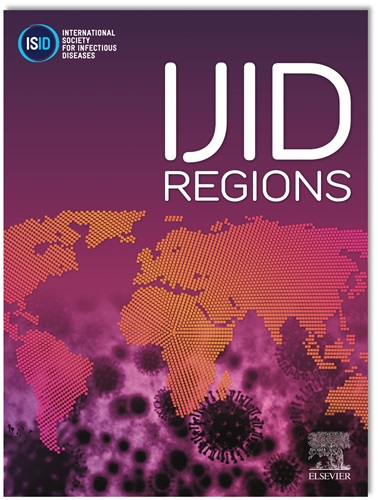Time trends in malaria incidence from 1992 to 2021 in high-risk regions: An age‑period‑cohort analysis based on the Global Burden of Disease study 2021
IF 4.8
2区 医学
Q1 INFECTIOUS DISEASES
引用次数: 0
Abstract
Objectives
Malaria, caused by plasmodium parasites, remains one of the world's most significant infectious diseases due to its high incidence and mortality. This study aims to analyze malaria incidence globally, identify high-risk regions, and examine long-term trends in incidence to provide important evidence for malaria eradication.
Methods
We used data from the Global Burden of Disease Study 2021, applying the age-period-cohort model to estimate the effects of age, period, and cohort on malaria incidence from 1992 to 2021. We calculated the net drift (overall annual percentage change), local drift (annual percentage change for each age group), longitudinal age curves (expected longitudinal age-specific rates), and period (cohort) relative risks.
Results
In 2021, the global age-standardized incidence rate of malaria declined to 3485.3 per 100,000 (95% uncertainty interval [UI]: 2804.5-4435.7), a 5.24% decrease since 1992. Sub-Saharan Africa has the highest age-standardized rate at 20,225.9 per 100,000 (95% UI: 16,033.5-25,862.6), accounting for 92% of all new cases globally. From 1992 to 2021, age-standardized malaria incidence rates generally declined across highest-risk regions, although Sub-Saharan Africa saw the smallest decline, with a net drift of –0.74% (95% confidence interval: –1.32 to 0.17). The 0-4 age group faces the highest risk, which decreases with age.
Conclusion
Malaria continues to threaten public health in Sub-Saharan Africa, particularly among the 0-4 age group. Efforts should focus on enhancing access to malaria control measures and implementing targeted public health policies for priority groups.

1992年至2021年高风险区域疟疾发病率的时间趋势:基于2021年全球疾病负担研究的年龄-时期-队列分析。
目标:由疟原虫引起的疟疾由于其高发病率和高死亡率,仍然是世界上最严重的传染病之一。本研究旨在分析全球疟疾发病率,确定高危地区,研究发病率的长期趋势,为根除疟疾提供重要证据。方法:使用全球疾病负担研究(GBD) 2021的数据,应用年龄-时期-队列模型估计1992年至2021年年龄、时期和队列对疟疾发病率的影响。我们计算了净漂移(总体年百分比变化)、局部漂移(每个年龄组的年百分比变化)、纵向年龄曲线(预期的纵向年龄特定率)和时期(队列)相对风险。结果:2021年,全球疟疾年龄标准化发病率降至3485.3 / 10万(95%不确定区间[UI]: 2804.5 ~ 4435.7),较1992年下降5.24%。撒哈拉以南非洲的年龄标准化率最高,为20225.9 / 10万(95% UI: 16033.5至25862.6),占全球所有新病例的92%。从1992年到2021年,年龄标准化疟疾发病率在最高风险地区普遍下降,尽管撒哈拉以南非洲的下降幅度最小,净漂移为-0.74%(95%置信区间[CI]: -1.32至0.17)。0-4岁年龄组的风险最高,随着年龄的增长而降低。结论:疟疾继续威胁撒哈拉以南非洲的公众健康,特别是0-4岁年龄组的公众健康。努力的重点应是加强获得疟疾控制措施的机会,并针对重点群体实施有针对性的公共卫生政策。
本文章由计算机程序翻译,如有差异,请以英文原文为准。
求助全文
约1分钟内获得全文
求助全文
来源期刊
CiteScore
18.90
自引率
2.40%
发文量
1020
审稿时长
30 days
期刊介绍:
International Journal of Infectious Diseases (IJID)
Publisher: International Society for Infectious Diseases
Publication Frequency: Monthly
Type: Peer-reviewed, Open Access
Scope:
Publishes original clinical and laboratory-based research.
Reports clinical trials, reviews, and some case reports.
Focuses on epidemiology, clinical diagnosis, treatment, and control of infectious diseases.
Emphasizes diseases common in under-resourced countries.

 求助内容:
求助内容: 应助结果提醒方式:
应助结果提醒方式:


